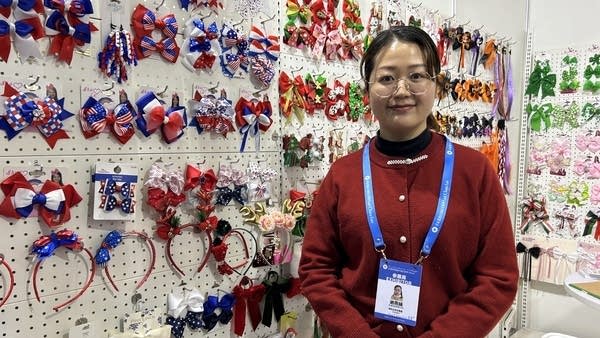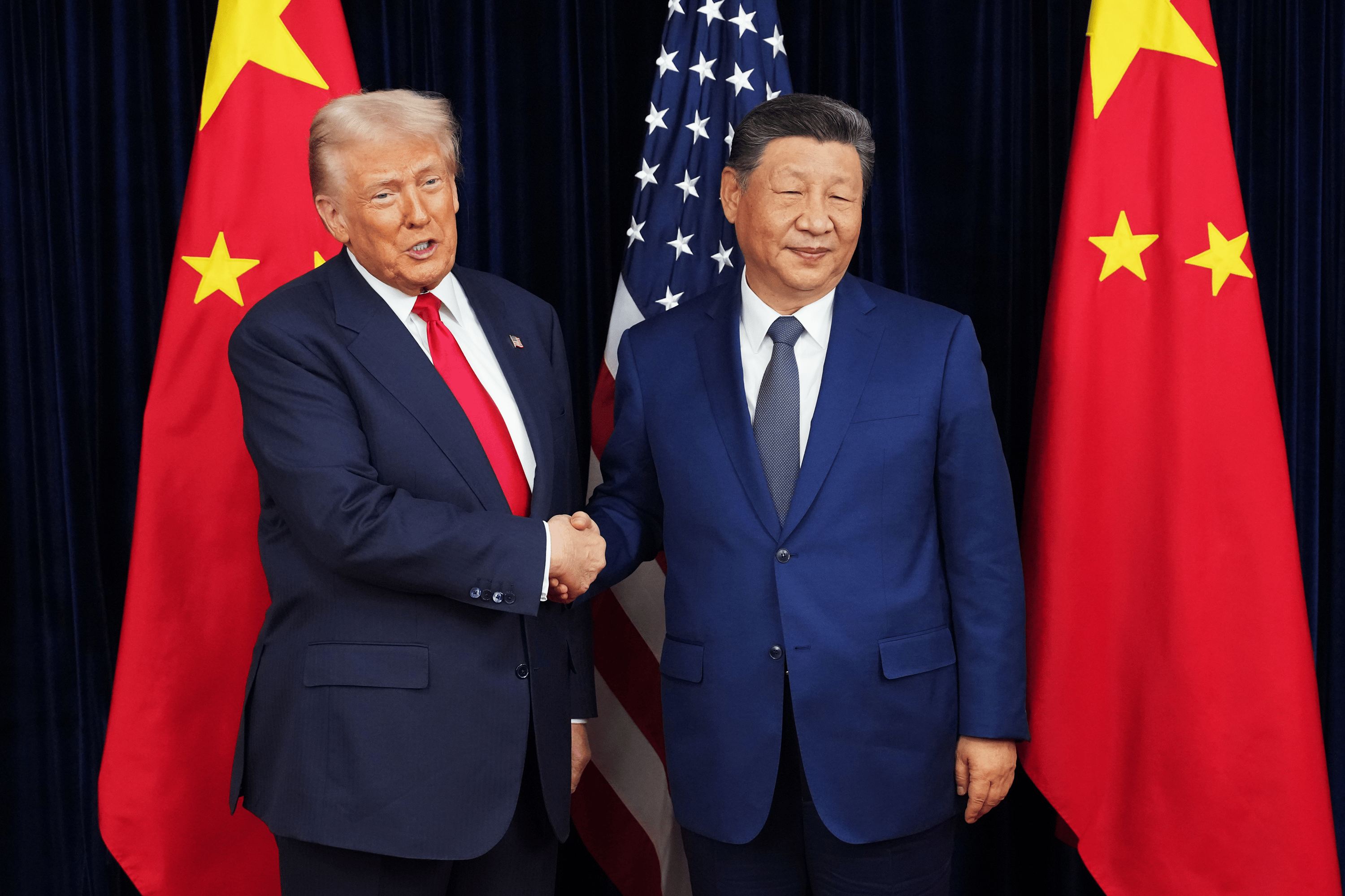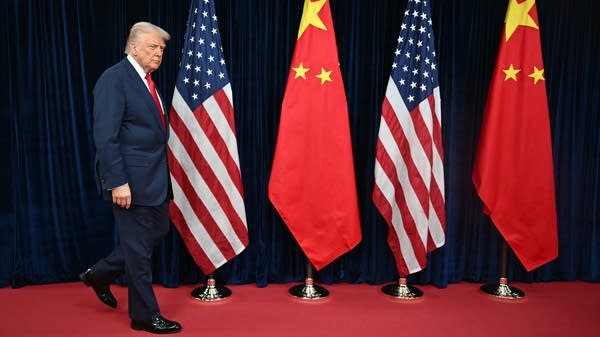How beefed-up U.S. tariffs are rattling a Shanghai trade show
Chinese manufacturers tell Marketplace how they are coping with the additional U.S. tariffs.

Around 4,000 exhibitors gathered for East China Fair, an import and export trade show in Shanghai this week, and they are no strangers to U.S. tariffs.
Hair accessories manufacturer Huahai from east China’s Zhejiang province had its products like hair clips in red, white and blue — the colors of the American flag — slapped with an extra 10% tariff during President Donald Trump’s first term.
Owner Xie Yanjuan said her business survived by lowering prices.
“Our profit margins were better during the first trade war,” she said. “But with round after round of additional tariffs, it’s kind of hard to sustain a business.”
President Trump had already imposed an extra 10% on all Chinese exports last month. On Tuesday, that rate doubled to 20% because China is, according to Trump, not doing enough to stop the flow of chemicals used to produce the street drug fentanyl. At the same time, Mexico and Canada will have an added 25% duty on their exports starting Tuesday over the fentanyl issue.
China says the U.S. tariffs are a form of “bullying.” It has responded with retaliatory tariffs of 10 to 15% on mostly American agricultural products and has restricted exports to 15 U.S. companies.
Hangzhou Haoshi Shoes manufactures rainboots for European and American brands like Clarks, Walmart and Disney. Its main business is in Europe, though 20% of their business is from the U.S.
“Our clients asked us to lower the price because their costs have increased. But we’re doing mid- to high-range rubber boots. The raw material cost is rising,” said foreign sales manager Alex Tu. “The rubber price has increased by 20%, then we have another 20% in tariffs so far this year, so our prices are under a lot of pressure.”
Wenzhou Mingqi Paper Industry, which manufactures printed paper napkins and car tissue holders, was asked by clients to share the burden of additional tariffs.
“We couldn’t afford that, so we said no,” said owner Huang Shouhao. His products are still getting to the U.S., but in an indirect way.
“We’ve seen sales to Vietnam increase, and then they are actually exported to the U.S. They’re just re-routing through Vietnam,” Huang said.
This way, Chinese exporters and American importers try to mask the products’ origins and dodge U.S. tariffs.
Manufacturers who control their entire supply chain, such as Christmas tree manufacturer Shaanxi Longstar New Material, can keep prices down.
“We will lower our prices accordingly. Our factory produces everything from raw materials to the finished tree, so we’re fine,” sales manager Li Linjing said.

For now, e-commerce vendors are safe from the U.S. tariffs because of an exemption for all products costing $800 or less. Trump said he will close that loophole, though that plan is currently on hold.
“Every company should be adaptable,” said Sophia Li, boss at the e-commerce consultancy group Zhimaobang. Her firm helps companies run their e-commerce sites and set up shops on platforms such as Amazon, TikTok and Walmart.

“We should prepare in two ways: increase the competitiveness of our products and explore other markets to diversify risks,” she said.
However, Li does not recommend quitting the U.S. market, because Americans still buy more than any consumers around the world.
“The U.S. is a big market; its purchasing power is obvious. We should try our best to grab our slice of this cake.”
Additional research by Charles Zhang.













